What is Aggregation in SailPoint?
What is Aggregation in SailPoint?
Regarding the SailPoint utility, it is clear that they have the choice of a fairly featured IAM suite. Hence, identity management in SailPoint has several processes for organisational access governance.
Among these, one is aggregation, which aids the retrieval of data from the target system and, at the same time, assures that the identities are clean and up-to-date.
When discussing SailPoint, it becomes explicit that the task of aggregation is indeed a key one in sustaining identity records as a whole.
When we perform aggregation, SailPoint pulls user news from the source system and updates the identity. If additional people are in the source file, they are also added to SailPoint automatically.
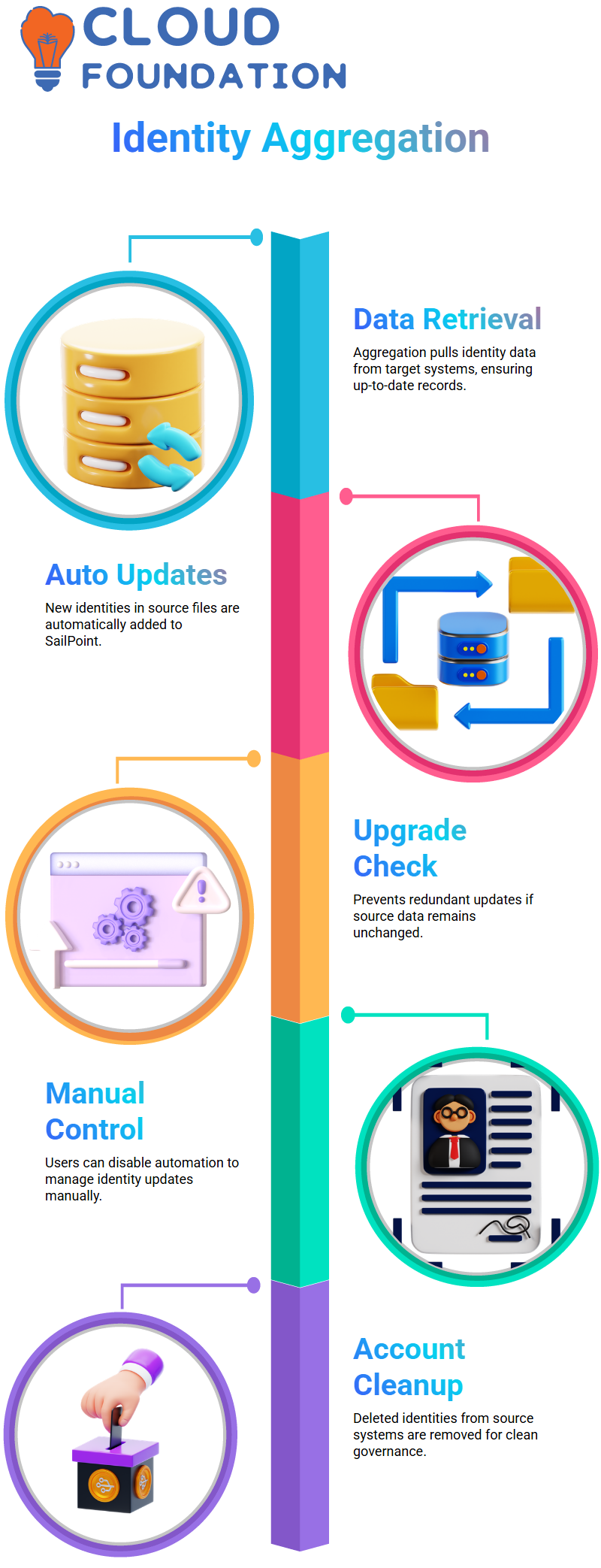
Fine-tuning Aggregation in SailPoint
A feature of SailPoint is the upgrade technique, which stops the redundant updates. If the source system remains unchanged, the system checks and conducts an aggregation without any data update
On the other hand, this quality can be deactivated if users are willing to perform the updates manually.
Despite that, we can locate the deleted accounts in the SailPoint system. Whenever an identity was previously aggregated from the source system but is no longer present, SailPoint removes the old account, thus continuing clean identity governance.
SailPoint Aggregation Setup
For the aggregation of SailPoint to get started, a task needs to be created first.
The application is indelibly defined in the task configuration, and a name (e.g. ‘HRMS Aggregation’) is provided.
Once the task is saved and run, the aggregation will work in the background, and data from identities will be retrieved.
After completing the task, the next step is to inspect the evidence obtained in SailPoint.
We can be informed about the task in detail—task name, type, description, and runtime are the data we can become aware of, as well as the admin who started it. This gives us access to the number of identities that were aggregated.
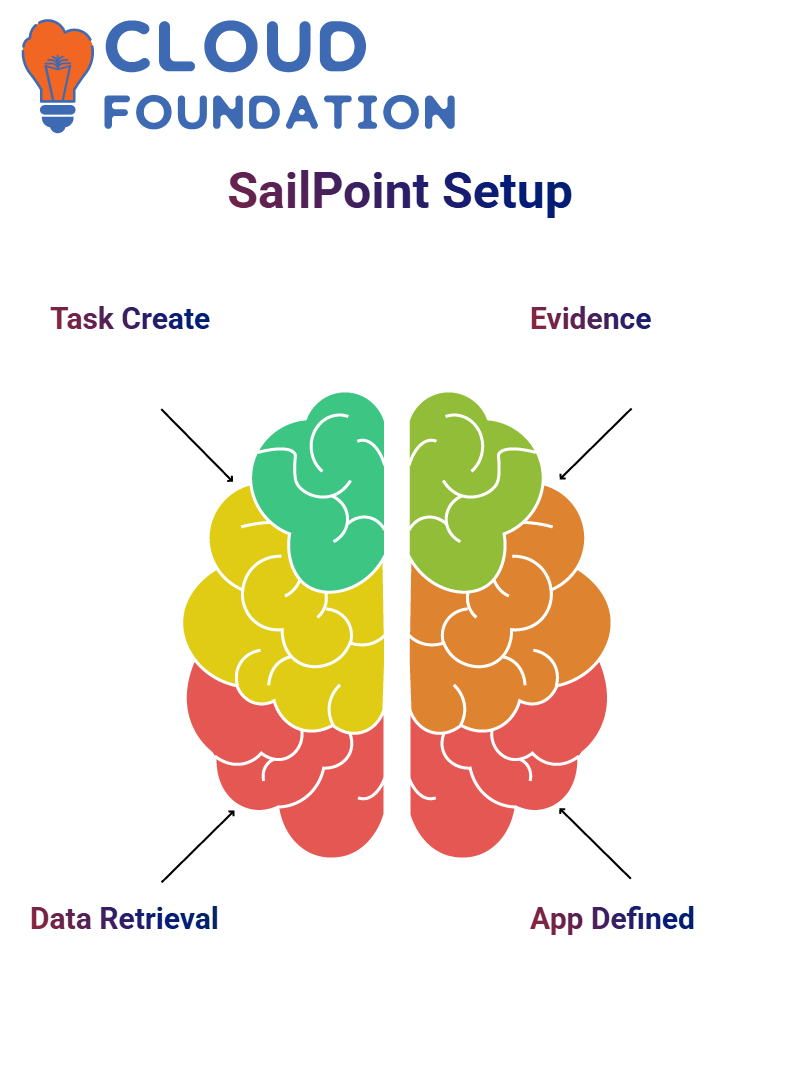
Applications in SailPoint
In SailPoint, applications are defined as either authoritative or non-authoritative. To set up an application, start by clicking the application definition tab.
On the screen, there will be a brand-new system with no applications defined. SailPoint approves introducing new applications by only giving the mandatory details, like the application type and configuration parameters. These steps are directed to confirm a smooth connection and data execution.
SailPoint’s Features
When working with SailPoint, the most well-known features include first name, last name, email, active or inactive status, regardless of country or nation.

This is why SailPoint has included these details by default while conceding modification. You are free to increase the number of properties that meet client necessities.
SailPoint Object Browser
If we have to choose only one tool of many available, it would be the Object Browser for doing things with SailPoint.
If you’ve ever felt like you were in a maze and couldn’t find a way out, steering through SailPoint’s backend, this tool is your bright light that will help you not only to understand but also to visually see how the data fabric is organised, which will ease your learning.
Now, the thing is that SailPoint’s Object Browser is of such weight. It doesn’t do the data manipulation, but it shows us vital user evidence.
For demonstration, when a user’s email is retrieved, we can check how it is stored; this leads to knowing the data mapping. Such an activity is part and parcel of SailPoint’s development.
SailPoint UI Visibility
While SailPoint stores all details, not all are shown on the starting page.
To make these qualities visible, we must shift the UI configuration.
The issue is that only the most critical characteristics, like department and region, are shown more prominently.
SailPoint Hour Mapping
Take a look at how SailPoint works with mapping. We kick off with the features that should be filled in.
The whole procedure starts with source mapping—selecting a source application to populate the imperative values from HRMS.
The illustration of first-name mapping begins with selecting HRMS as the source and then completing the sequence. The mentioned technique is also used for the remaining characteristics, i.e. last name and email.
Once the mappings have been specified, the next step is to run aggregation so that the user data adjustments can be reflected.

Schema Configuration and Data Synthesis in SailPoint
Setting up a schema is a requirement in SailPoint for procuring data. Choose the traits that will be extracted and loaded into the target system.
For example, get the definite evidence from the source system, e.g., the employee email destinations that are rare identifiers.
After creating the schema, test the connection to verify that SailPoint can extract data normally.
Initially, when saving, trying out records on a temporary screen is indispensable to ensure the settings are correct.
Once the application has been defined in SailPoint, the next step is an aggregation process that works with data. This is more of a fetch process that will provide the data to SailPoint from the source system while the data is kept clean and managed properly in SailPoint.
Amplified System Management in SailPoint
SailPoint has been a revelation for me as the work or task of fetching approvals done has never been easier before Not only from the beginning, through work items to administrative rights, but SailPoint also assures the requests are well-coordinated and are executed quickly the system enables me to appraisal requests without any hitches to the process and thus the bottleneck is gone.
The provision of the requisite and expected executions is made through dual visibility, which SailPoint implements.
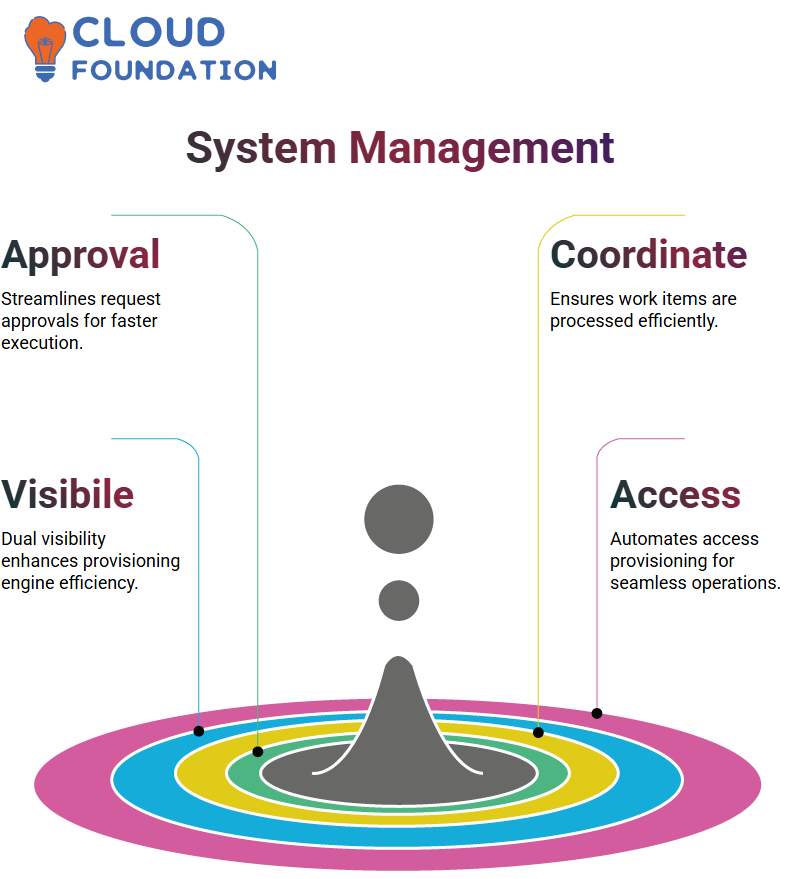
This visibility ensures that provisioning engines operate potently, and access is added correspondingly.
In reality, SailPoint single-handedly streamlines the request flow, which is even applicable when routine internal processes are necessary.
Editing Applications in SailPoint
One of the key benefits of SailPoint is that you can not only duplicate but also easily change application settings.
Take a look at HRMS or LMS, even though the terminology has been easy, the process is pretty simple—a step is just to omit the identifying details such as machine-specific IDs and timestamps.

When you download the data into SailPoint, follow the correct procedure strictly. Suppose the data object has been properly built. In that case, SailPoint can provide a transparent migration process, and thus, executing data governance becomes both resourceful and less involved.
The breadth of SailPoint’s solution also guarantees that, despite any alterations in configurations, the central identity remains unchanged.
SailPoint Identity Mapping
SailPoint is supplied with data mapping quality to achieve the required properties, such as first name, last name, email, and organisational details. Business rules are the main parameters for selecting these traits.
By configuring identity mapping on SailPoint, companies verify that their authoritative applications are smoothly connected to SailPoint and account for resourceful onboarding and identity governance of the highest correctness level.
SailPoint Governance Mastery
In this case, the governance competence of SailPoint is so distinctive that it is only here that it is highly plausible to achieve full capability for policies and access reviews oversight of several myriad applications.
By interacting with new tools, the idea may be pretty tricky. Still, SailPoint is solving the integration and thus saving time in the procedure and consequently money, especially when it comes to its use as the sequence goes on.
SailPoint Debug Console
An essential part of SailPoint is a debug console and an admin console. The debug console identity shows applications, groups, and policies in XML form, which is the unmasked object storage.
Through the object selection process, the user can identify the stored value, change the configuration if necessary, and thus interact with the database. Furthermore, this tool gives very sharp visibility of attribute visibility and system settings.
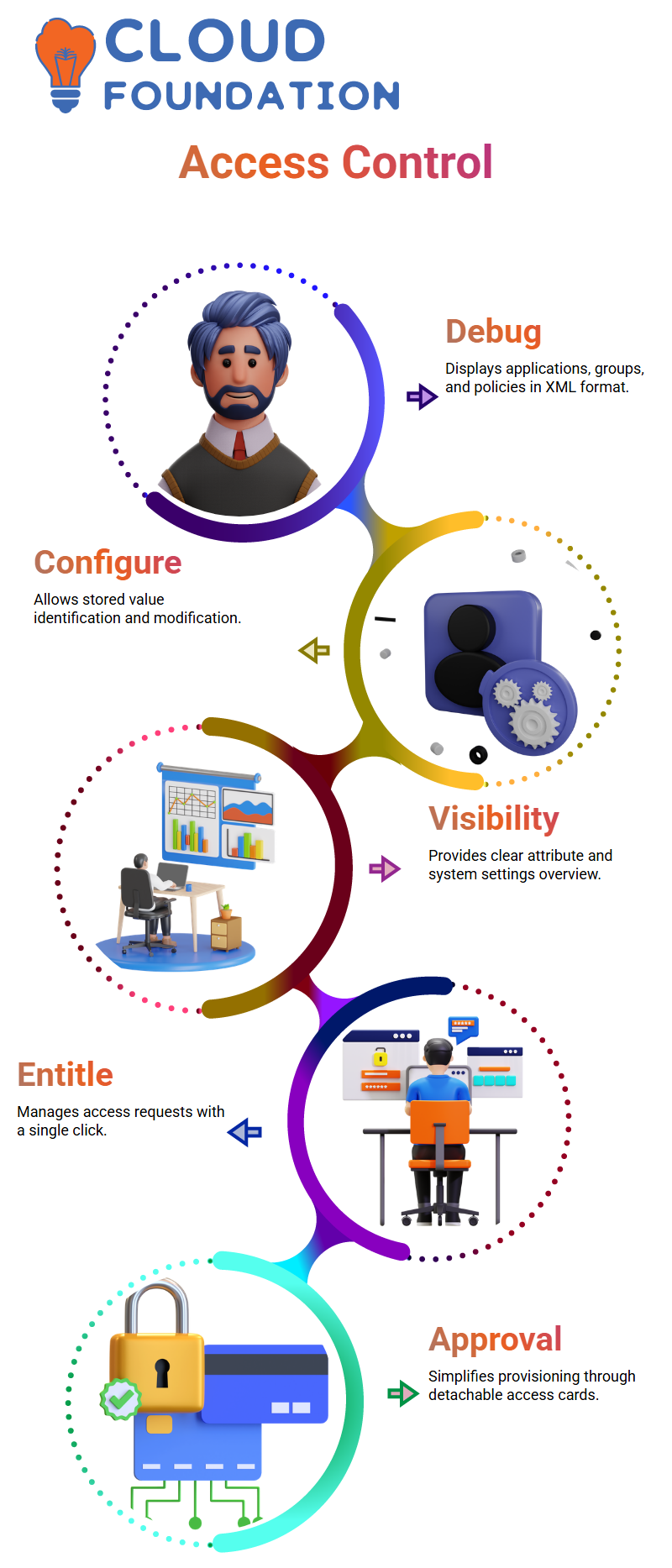
SailPoint’s Entitlement Catalogue
Once I am inside SailPoint’s entitlement catalogue, the access request is just a click of a button away. Access can be easily granted and denied through SailPoint’s entitlement catalogue.
One of the most notable features I have seen in entries in the 17 access types directory of SailPoint is that every card is detachable, which makes the approval and provisioning processes much simpler.
Applications and Technology in SailPoint
A sample of SailPoint’s interaction with ServiceNow for the application shows the technical side attributable to it and its progress.
Identifying and verifying the authentic permission level for the next turn to higher permission levels entirely rests with SailPoint.
The integrated ServiceNow system has also been updated with the transitions. The unified incorporation is a sample of how SailPoint can easily change and add upgraded elements to the system.
Irrespective of the channels, such as web services or the launching of new applications, by exploiting SailPoint, employees do not experience hitches as all interfaces related to their work are quick and capable.
It being the best technology signifies that several companies can use it for the integration purposes, hence, everyone is turning to SailPoint for their sequence management solution.
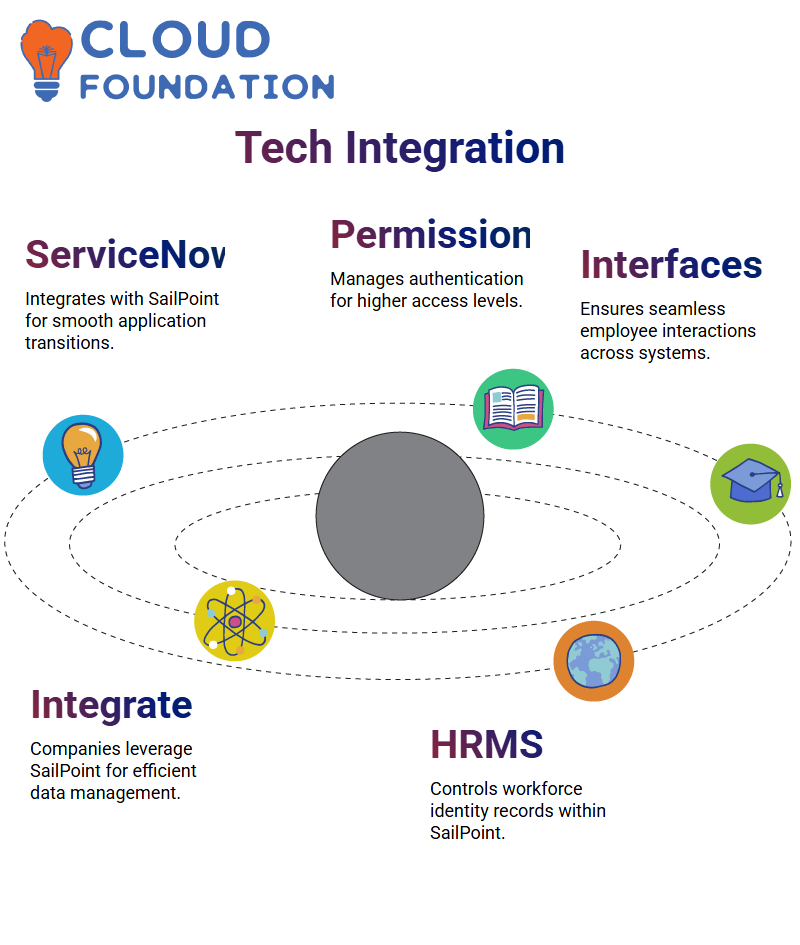
HRMS in SailPoint
HRMS is the place that has the final say on the employee’s identity in SailPoint.
This application is the most trusted one since it controls the workforce of an organisation. SailPoint uses the HRMS system to inject all the employees’ records into the system.
These employees are inside SailPoint, whereas LMS or payroll systems might also have non-employees from other teams.
Data Governance with SailPoint
SailPoint is about the governance of identity and formulating rules and policies to govern how data is managed.
By reaching the SailPoint UI, customising policies is possible in no time. Debugging can be a substantial solution to grasp the subject of the creation of policies completely. Debugging in SailPoint presents the real state of the data as it is in the repository, thus making it a valuable tool for the job.

This is when things get tricky. We can easily check by simply examining the objects. Through the Object Browser, we can see the relationship of these characteristics with the system. In SailPoint, selecting and loading these features step by step is essential to check if each object is correctly presented.
SailPoint Access Management
One of the vital functions in SailPoint is the management of multi-value properties. An employee like James Smith holds multiple access rights, such as super, approve, reject, and input. Using the SailPoint application, we can handle and properly organise those access rights.
Consolidating the access data was the first and foremost step. By applying SailPoint, consolidating individual tables into one view makes it possible for employee access rights to be lucid and understood. Thereby, the identity governance is set up correctly and secured.
When taking advantage of SailPoint, companies specify what privileges they possess in entitlements, set these as managed details, and then harmoniously incorporate them into the entitlement catalogue. In such a manner, access requests become role-based, certifying employees’ conformance.
Job-Centric Integration in SailPoint
SailPoint, famous for its self-adaptation and unconstrained possible development space, presents businesses with the mentioned flexibility. Companies are in command of their activities. They adopted the idea of the system, starting with ServiceNow and going back to SailPoint. Needless to say, it is a perfect integrator with all sorts of systems. No greatness can surpass the management of good procedure.
The user-friendly nature of SailPoint authorizes it to function as a valuable tool for any organisation. It integrates smoothly with other systems, thus leading to a rise in data barter and system performance.

Navya Chandrika
Author



